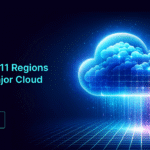Table of Contents
- Introduction to the Lifeline Support Program
- Exploring Eligibility Criteria for Lifeline Support
- How to Determine Your Lifeline Eligibility
- The Impact of Lifeline Support on Communities
- Lifeline Support: A Closer Look at the Application Process
- Staying Informed About Lifeline Support Changes and Updates
- Overcoming Challenges: Getting Lifeline Support When In Need
- The Evolution of Lifeline: From Landlines to Broadband
- Conclusion: The Importance of Connectivity and Lifeline’s Role
Key Takeaways
- Understand the diverse eligibility criteria for Lifeline support and the simplification of the application process.
- Assess the societal benefits of Lifeline support and how it contributes to closing the digital divide within communities.
- Learn how to stay updated on policy changes affecting Lifeline support and discover additional resources beyond the program.
Introduction to the Lifeline Support Program
Communication has completely shifted to the stage where we cannot live without the phone in our hand as we cannot live without electricity and water. The very fact that this program recognizes this aspect is demonstrated by the presence of an aspect that provides discounts on phone and internet services to qualified low-income persons and families. Under this federal supervision, people do not need to worry about their costs to stay connected as they can benefit from the program that can accommodate the fast-moving internet.
Exploring Eligibility Criteria for Lifeline Support
Lifeline qualifications criterias, serves for the reason of life expectancy among different people. The assistance is intended for people and families with incomes between 135% and 195% of the Federal Poverty Guidelines in the US. It opens the way for people to apply to the means-tested federal welfare program and qualifies them for benefits such as Medicaid, SNAP, and SSI. These factors provide criteria that are inclusive to ensure that they reach out to everyone, which is an indication of how broad the backing of this program is. Admittedly, the program has the embrace of the holistic approach so that as a broad category of population, each and everybody has the access to the provisions that are necessary for self-improvement.
How to Determine Your Lifeline Eligibility
Qualifying for Lifeline is based on verifiable criteria: your economic status or participation in federal assistance programs. Applicants are encouraged to gather official documents that confirm income level or program enrollment before enrolling in Lifeline. These may include prior tax returns, employer income statement, or official aid program documents. Importantly, ongoing eligibility checks are built into the program to ensure the support reaches the right individuals.
The Impact of Lifeline Support on Communities
Lifeline’s mission has favorably impacted community cohesion and progress. The program is about individual aid and its broader effect on communities, enhancing opportunities for education, employment, and engagement in civic life. Easy and affordable access to communication services supports the essence of community – staying connected and informed. The results are tangible: increased digital literacy rates, enhanced employability, and strengthened social bonds, particularly in historically underserved areas.
Also Read: Enigmatic Pikruos : Unveiling Its Origins
Lifeline Support: A Closer Look at the Application Process
Lifeline assistance is just one component of a complex program designed to increase the ability of the poor to afford their basic needs. The application process for applying for that assistance has recently been designed to make the process easier and more efficient for applicants to get the help they need. Therefore, the first step should be getting the required paperwork including evidence of income, membership of a welfare program or any documents that confirm the candidate’s eligibility for the program. The application process is now much more straightforward and more accessible, thanks to the availability of online resources and dedicated support lines. These resources provide comprehensive guidance and assistance to applicants, ensuring the application process is smooth and straightforward. With these resources in place, people who need Lifeline assistance the most can access the help they require without any unnecessary complications.
Staying Informed About Lifeline Support Changes and Updates
The Lifeline Program is an instance of a government program that has goal to provide people on lower income with cheap phone and internet service in the US. Achieving this goal will boost the economy, so keeping abreast of any changes that could affect it becomes a prerequisite. The Federal Communications Commission, i.e., FCC, is when such a situation arrives. The FCC serves as the chief authority on professionally sourced, timely, and well-informed information on the eligibility standards and benefits in regard to Lifeline. They regularly update these criteria and requirements to ensure they remain relevant with changing times. Keeping yourself informed about these updates is crucial to making informed program decisions. Therefore, individuals must stay updated on government policies and technological advancements to participate in the Lifeline program.
Overcoming Challenges: Getting Lifeline Support When In Need
Applying for governmental assistance can sometimes be fraught with complications. Applicants for the benefits are likely to face making the application form and going through the process verification. Looking for help by creating connections with community institutions which deliver guidance and counsel in filling the application forms for those federal programs will be your self-prescribed therapy to make sure you walk through the process smoothly.
The Evolution of Lifeline: From Landlines to Broadband
The Lifeline program has been capping in and having a dramatic change since its introduction. Initially, it intended to allow people with low incomes who met the desired conditions to acquire cheap landline services. However, the program has broadened its scope with the advent of technology and the subsequent change to e-service where communication has largely shifted to online channels. Since the program was introduce, subsidies for broadband internet services have increased.
During application period, eligible residents can enjoy a wider gamut of communicating activities. This shift demonstrates the resilience of the program that to make sure every American, irrespective of their financial conditions can enjoy the thriving digital world as much as anyone with the one device. The fact that the slogan was open to changing is the witness of the Lifeline program’s assuming not only the passive position but also the active one and modernizing its approach to keep pace with technological development and communication accessibility.
Conclusion: The Importance of Connectivity and Lifeline’s Role
Finally, it is vital to give a thought to that very important thing – to the advantage of being link in the modern world. The Lifeline program is a great piece of evidence of the fact that our society is persistently creating distinctive models of communications so that all people can access it. Digital inclusion can be consider as one of the main pillars for the development of the digital divide and in the creation of a more inclusive society.
Money is a critical element of life today and even though some may argue that it does not determine individual qualities, it can still be a big obstacle that is in the way of success, happiness, and quality of life. Those who are qualified for the Lifeline program can use it as a rope, a lifeline that allows them to open up opportunities that otherwise would be unattainable. With Lifeline program, people can be able to access education resources, quiesce looking for new career options and keep in touch with their loved ones in this regard the program can transform people lives and create new pathways for success.





